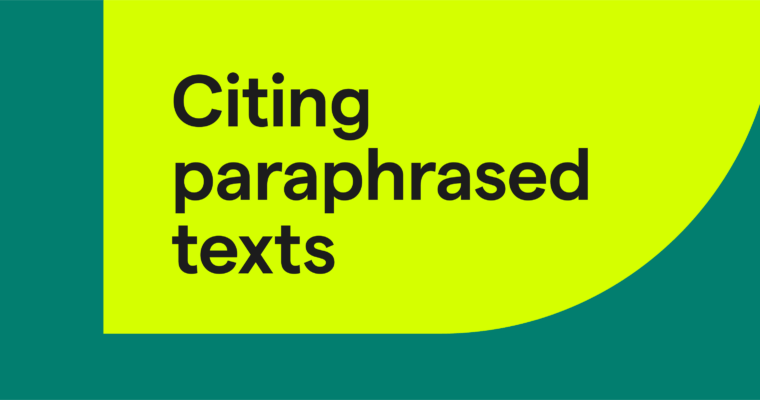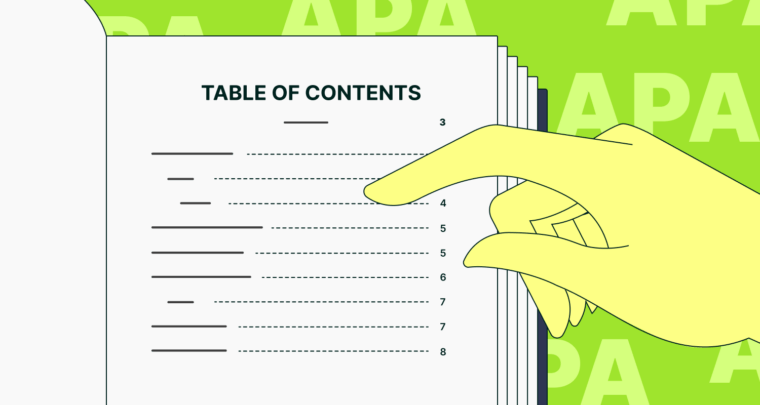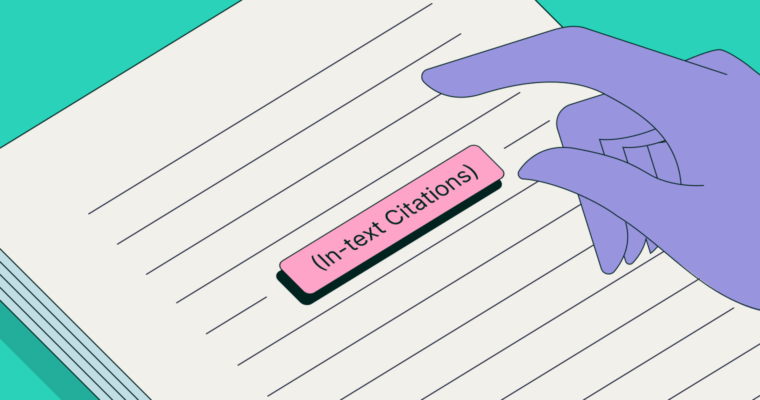
As AI gains popularity, students have been exploring how to use it to support academic writing, with time-saving tasks like summarizing longer text, identifying answers to one’s questions, or brainstorming research topics. If you’re considering using AI for school assignments, it’s first and foremost important to understand what your professor’s and/or your school’s guidelines are for ethical use. Furthermore, if you do use AI, it’s recommended that you cite AI/ChatGPT in Chicago style for papers.
Still, because there’s little precedent for citations of AI, a lot of people don’t know how to cite AI in Chicago style. Below, we explain clearly how to cite AI/ChatGPT in Chicago style so you can stay within the format’s official guidelines.
What are AI citations?
Artificial intelligence (AI) refers to machine programming designed to copy human behavior with better efficiency. AI chatbots like ChatGPT can hold interactive conversations and perform tasks based on prompts: what the user types or inputs.
For example, to help inspire ideas for writing a research paper, you could ask ChatGPT a question like, “What contributed to the collapse of the Roman Empire?” The AI chatbot would then list some factors in the downfall of Rome, which could point you in the right direction for your detailed research.
However, if you’re using AI chatbots for your research, you should mention them as citations in your paper. Depending on which format you’re using—APA, MLA, or Chicago—the citation will have different rules for punctuation, the order of the information, and which information needs to be mentioned at all.
This article focuses exclusively on how to cite AI in Chicago style, but we also have guides for citations of AI in APA and MLA. If academic citations are too confusing, consider using Grammarly’s auto-citations, which instantly generate accurately formatted citations based on your chosen formatting style.
How to cite AI in Chicago style
The Chicago Manual of Style citation guidelines say that AI chatbots should be cited as personal communication, rather than a proper source.
According to the CMOS website, the reason for this is that other people can’t access your unique conversation with an AI chatbot, even if they use the same prompt. That makes your conversation “non-retrievable data,” which fits the category of personal communication better than a retrievable source.
However, you still need to cite an AI chatbot when referencing its information in formal papers. The CMOS website suggests citing AI in footnotes or endnotes, like other sources, and mentioning all of the relevant information, such as a description of the prompt and the date you accessed it. Alternatively, you can cite AI in Chicago using parenthetical citations if you prefer the author-date system.
We provide more details on each of these methods below, including examples for how to cite AI/ChatGPT in Chicago style.
Before we move on, there’s one more thing you should know: Do not include AI chatbots in the bibliography or reference list. Because personal communications are non-retrievable, they do not require a full citation at the end of the paper. Rather, citations should only be footnotes, endnotes, or parenthetical citations.
When should you cite AI/ChatGPT in Chicago style?
As with all sources, AI or not, you must include a citation for each idea in a paper that’s not your own. Provide both note markers and parenthetical citations directly after the relevant passage in your paper, regardless of whether you’re using a direct quote or merely paraphrasing.
Informal papers like essays are less strict. For these, more casual narrative citations will do. Narrative citations are when the writer describes the source directly in the text, such as, “When asked who the most successful monarch of Britain was, ChatGPT responded….” However, formal academic papers require proper citations for each new piece of information.
How to cite ChatGPT in Chicago style
What makes Chicago different from APA and MLA is that Chicago allows for more flexibility. The writer can choose whether to use footnotes, endnotes, or author-date parenthetical citations when citing sources, and the CMOS provides thorough guidelines for each. Below, we explain how to cite ChatGPT using each method, along with AI citation examples.
How to cite ChatGPT in Chicago style: footnotes and endnotes
Footnotes and endnotes are small notations that provide citations or additional information at the bottom of a page (footnotes) or at the end of a section or entire paper (endnotes). They are marked in the text by a superscript number (1) that corresponds to the number of the note.
The first time you cite AI/ChatGPT in Chicago style with a footnote or endnote, the note needs to include:
- the name of the chatbot
- a description of the prompt or task (if not mentioned in the text)
- the date of the conversation, written in month-day-year format with the month spelled out
- the company or organization that produced the chatbot
- the URL of the chatbot
So if you’re using ChatGPT, an example citation of AI would look like this:
1 ChatGPT, response to “summarize the life of Genghis Khan,” July 19, 2023, OpenAI, https://chat.openai.com/chat.
Notice how the information is separated by commas, with a single period at the end.
The first footnote or endnote from a source has the most details, but any subsequent notes can be abbreviated if they come from the same AI conversation. In this case, you would write only the name of the AI, used in place of an author.
2 ChatGPT.
How to cite ChatGPT in Chicago style: author-date
The author-date style of citations is Chicago’s answer to parenthetical citations. With this method, the citation consists of the name of the AI chatbot in place of the author and the date you accessed it, both within parentheses. Set the parenthesis before punctuation marks such as periods, semicolons, and commas, but after quotation marks if used with a quote. CMOS recommends mentioning the prompt in the text.
… based on an AI response to “summarize the life of Genghis Khan” (ChatGPT, July 19, 2023).
How to cite AI/ChatGPT in Chicago style FAQs
Can you cite AI/ChatGPT in Chicago style?
Yes, you cite AI/ChatGPT in Chicago just like in any other source. If you use an AI chatbot to do research for an academic paper, you need to cite the information you learned from it.
When should you cite AI/ChatGPT in CMOS?
In the Chicago format as well as in the APA and MLA formats, you should cite your source every time you include new information from it. This goes for AI and ChatGPT as well.
How do citations for AI-generated text work?
In Chicago, AI-generated text is cited as personal communication because the conversation cannot be accessed by other people. All citations for AI chatbots should include the name of the AI, a description of the prompt, and the date accessed. With footnotes or endnotes, also include the organization that created the AI and the URL.





